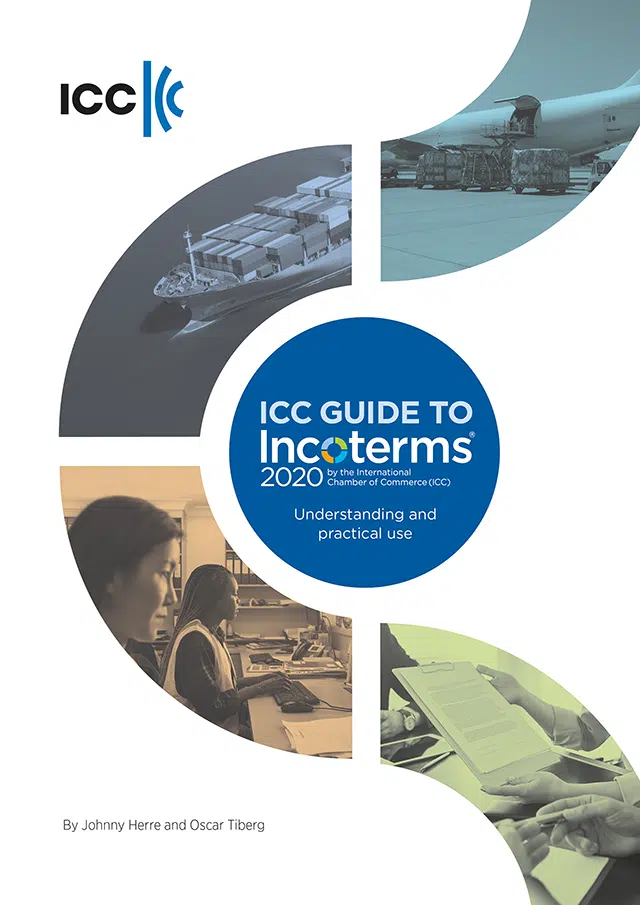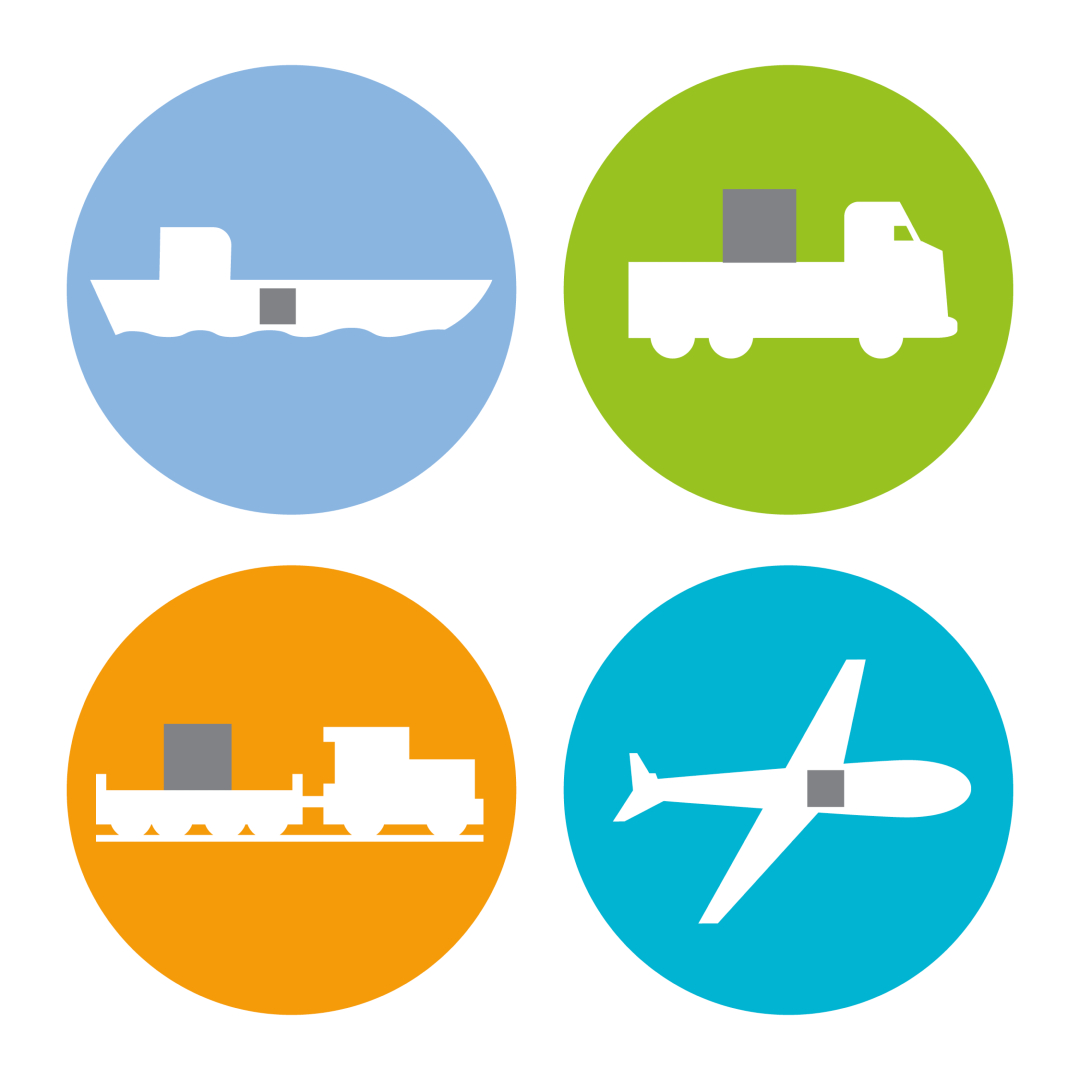INTRODUCTION . . . . 9
►The evolution of the Incoterms® rules from 1936 to 2020 . . . 10
►Incoterms evolves with international trade. . . . 11
►Recent developments in the Incoterms® rules. . . . . 12
►The sales contract and additional contracts. . . . . 13
UNDERSTANDING THE INCOTERMS® RULES. . . . . 17
►What are the Incoterms® rules and what can they do for you? . . . 18
►Referencing the Incoterms® rules in a contract of sale . . . . 18
►What the Incoterms® rules do not do for you . . . . 19
►The Incoterms® rules and contracting practice. . . . 21
►The need for interpretation of “key words” . . . . 21
►The most common practice. . . . 21
►The FOB point. . . . . 22
►EXW and the seller’s assistance. .. .. . 22
►Containerisation. . .. . . 22
►Checking how the goods are handed over for carriage. . . . 23
►The seller’s duty to provide substitute goods . . . . 24
►Checking availability of documents required under the Incoterms® rule. .. . . 24
►Why are as many as 11 Incoterms® rules required? . . . . 24
►Which Incoterms® rule should be chosen?. . . . . 25
►Terms and business strategies. . . . 25
►The Incoterms® rules and the contract of carriage. . .. . 25
►Charter parties. . .. . . 26
►Usual, normal and suitable carriage. .. . . 27
►The bill of lading. .. . . 27
►Sale of goods in transit. . . . . 28
►The duties under the Incoterms® rules to load and unload the goods. . . . 28
►The duties connected to export and import clearance.. . . . 29
►Economic sanctions and export controls. . . . 29
►EXW and export formalities. . . . . 30
►Customs-free regions. . .. . . . 30
►Responsibility for charges. . . . . . 31
►The Incoterms® rules and insurance. . . .. . . 31
►Insurance when the parties use FOB instead of FCA. . . . . 31
►Insurance under CIF and CIP. . . . . 32
►When insurance is excluded. . . . . . 32
►Risks of war and labour disturbances. . .. . 32
►The Incoterms® rules and documentary credits. . . . . 32
►The Incoterms® rules and electronic commerce. . . . . 34
►Variations of the Incoterms® rules. . . . . 34
►Additions to EXW. .. . . 35
►Additions to FOB. . . . . 35
►Additions to FCA. . .. . . 35
►Additions to the C terms. . . . 35
►The Incoterms® rules and other terms in the contract of sale. . . . 36
►Increase of costs after the contract is concluded. . . . . . 36
►Risk of performance if goods are lost or damaged. .. . . 37
►Non-conforming goods. . . . . 37
►Transfer of risk v. transfer of property rights. . .. . 37
►The Incoterms® rules and dispute resolution. . . . 3Z
►The choice of arbitration. . . . . . 37
►Jurisdiction of the arbitral tribunal. . . .. 38
►Alternatives to arbitration and litigation. . . . . 38
►Need for specificity in referencing arbitration. . . . . 38
THE FOUR CATEGORIES OF INCOTERMS® RULES: MAIN COMPONENTS.. . . 39
►Important differences between shipment and arrival contracts. . . . 40
►The abbreviations: E, F, C and D terms. . . . 40
►The Incoterms® 2020 rules. . . . 41
►The term EXW: placing the goods at the disposal of the buyer. . . . 41
►F terms and C terms: the carriage-related terms. . . . . 42
►F terms: main carriage not paid by seller.. . . . . 42
►C terms: main carriage paid by seller. . .. . 43
►D terms: delivered terms (DAP, DPU and DDP). . . 46
SELLER’S AND BUYER’S OBLIGATIONS: AN OVERVIEW. . . . 51
►Sections A1 and B1: the obligation to exchange goods for money. . . . 52
►Sections A2 and B2: the seller’s obligation to deliver and the buyer’s obligation to take delivery.. . . 52
►The delivery obligation. . . . . 52
►Delivery at the seller’s premises (EXW and FCA). . . . . 53
►Delivery at the buyer’s premises . . . . 53
►Delivery at the waterfront under DAP and DPU. . . . . 53
►The buyer’s acceptance of the seller’s handing over for carriage. . . . . 54
►The buyer’s obligation to receive the goods from the carrier . . . . . 54
►Sections A3 and B3: the transfer from seller to buyer of the risk of loss of or damage to the goods. . . 54
►The “price risk”.. . . . 54
►Premature transfer of risk. .. . 55
►Identification of the contract goods. . . . 55
►Using force majeure clauses to protect the seller from the “breach of contract risk”. . . . 55
►Cases of delay. .. . . 55
►Sections A2, B2 and A4, B4: division of functions between the parties.. . . 55
►For economy of transport, do not divide functions. .. . . 56
►Additional service to the buyer under the F terms. . . . 56
►The custom of the port. . . . . . 56
►Caution when using FOB if the custom of the port is not known . .. . 56
►Handing over to the carrier under the C terms . .. . . 57
►Dividing the costs of discharge at destination. . .. . . . 57
►Sections A4 and B4: party to make the contract of carriage . . . . . 57
►Section A5: the seller’s insurance obligation. . . . . . 57
►Freedom of insurance restricted . .. . . 58
►Section A6 and B6: the parties’ duties to provide proof of delivery or of having taken delivery and the transport documents. .. .. . 58
►CFR, CIF and on board documents. . . .. . 58
►Surrender of original bill of lading essential. . . 59
►Non-negotiable transport documents. . . . 59
►Payment against sea waybills requires caution . . . . 59
►The problems of replacing bills of lading by electronic messages. . . . 59
►The “usual transport document” under CFR and CIF. . . . 60
►Transport document as proof of delivery. . . . 60
►Documents required to obtain delivery under D terms. . . . 60
►Transport documents for carriage by sea . . . . 61
►Delivery orders. . . . . 61
►Sections A7 and B7: the obligation to clear the goods for export and import. .. . . 61
►Take precautions against the risk of export and import prohibitions. . . . 61
►Obtaining assistance to clear customs . . . 62
►Sections A7 and B7: security measures and the changing role of customs . . . 62
►Sections A7 and B7: pre-shipment inspection. . . . 63
►Section A8: the seller’s checking, packaging and marking obligations. .. . . 63
►Sections A9 and B9: division of costs between the parties. . . 64
►Main principle of distribution of costs .. . . 64
►The four main categories of costs. . . . 64
►Costs related to dispatch, carriage and delivery. . . . 64
►Costs for export, import and security clearance. . . 65
►Costs for services, assistance and information. . . 65
►Costs of insurance. . .. . . 65
►Cost distribution systems. . . . . 65
►Sections A10 and B10: notices. . . . . 66
►Conditions for the buyer’s giving notice. .. . 66
►Conditions for the seller’s giving notice.. . . . 66
►Sufficient notice. . . . . 66
►Failure to give sufficient notice . . . . . 66
INCOTERMS® 2020, A DETAILED COMMENTARY
Why 11 different Incoterms® rules? And what has changed from Incoterms® 2010?. . . . 67
►A summary of the 11 Incoterms® rules . . .. 68
►What has changed in Incoterms® 2020?.. . . . 69
GROUP I: ANY MODE OR MODES OF TRANSPORT EXW • FCA • CPT • CIP • DAP • DPU • DDP. . . . 71
►EXW | EX WORKS. . . . . 72
►FCA | FREE CARRIER. . . . . 84
►CPT | CARRIAGE PAID TO. . .. . .100
►CIP | CARRIAGE AND INSURANCE PAID TO.. . .116
►DAP | DELIVERED AT PLACE. . . . .132
►DPU | DELIVERED AT PLACE UNLOADED. . . .146
►DDP | DELIVERED DUTY PAID. .. . . . .160
GROUP II: RULES FOR SEA AND INLAND WATERWAY TRANSPORT FAS • FOB • CFR • CIF. . . . . . .173
►FAS | FREE ALONGSIDE SHIP. . .. .174
►FOB | FREE ON BOARD. . . . . .187
►CFR | COST AND FREIGHT. . . . . . .200
►CIF | COST INSURANCE AND FREIGHT. . . . . . .216
ROLE OF THE INCOTERMS® RULES IN AN INTERNATIONAL CONTRACT OF SALE. . .. . .233
►CHOICE OF TRADE TERMS. . . .234
►GROUP I: ANY MODE OR MODES OF TRANSPORT. . . .234
►GROUP II: SEA AND INLAND WATERWAY TRANSPORT.. . .234
►CHOICE WITHIN GROUP I. . . . .234
►CHOICE WITHIN GROUP II . .. . .234
►THE INCOTERMSRULESINC ONJUNCTIONWITHO THERTERMS OF THE CONTRACT AS SET FORTH IN THE ICC INTERNATIONAL SALE CONTRACT . . . .235
►What happens if:. . . . . .235
►Answer:. . .235
►THE INCOTERMS RULES IN CONJUNCTION WITH CISG. . . . .236
►What happens if:.. . .236
►Answer:. . . .236
TRANSFER OF RISK AND COST. . . . . .237
►About the authors. . .. . . 238
►Publications . . .. . .239
►Digital Tools . . . . . .242



